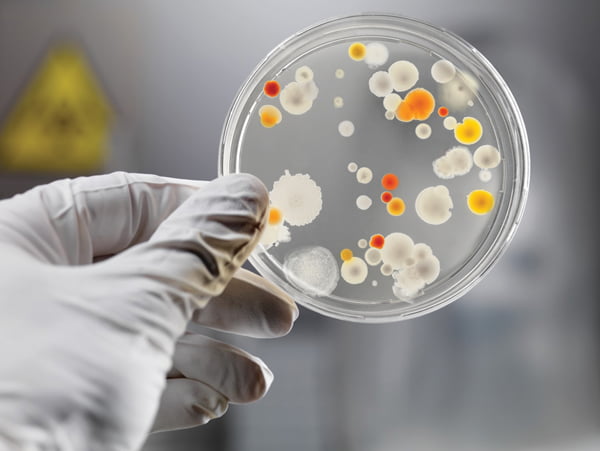The trained eye of a medical expert can use the finest details to make an accurate diagnosis…but imagine what else might be tapped through multispectral imaging. Salvo Coatings filters and devices reveal more – like fluorescence, spectral signatures, optical markers, and subcutaneous features.
Fluorescence
Fluorescence imaging and sensing has many practical applications including biological detectors, immunofluorescence, microscopy, labeling, chemical sensors, and whole animal/tissue imaging. Fluorophores are commonly attached to other molecules such as antibodies, proteins, amino acids and peptides and are used as probes to label a specific target. These fluorescent probes are then detected using a plate reader, small animal imaging system, fluorescence microscope, flow cytometer, or other fluorescence-reading instrument.
A fluorophore absorbs light at its excitation wavelength, and typically emits light at a longer wavelength. Fluorophores or reactive fluorescent dyes are available from many sources to fit your application – with various reactive groups to attach to different functional groups within the target molecules. Salvo Coatings provides filters that selectively transmit the emitted wavelength and block the excitation wavelength – creating improved contrast for both sensing and imaging these fluorophores.
The power of detecting multiple fluorescence markers is delivering powerful diagnostic tools. Doing it in a compact, portable footprint makes it accessible at the point of care. Using Salvo Coatings’ exclusive micro-patterned filter array technology, clients are building 4-channel fluorescence into a handheld device. Anywhere you need multi-wavelength detection, Salvo Coatings can combine multiple filters onto a single optic or filter array.
Tissue
Label-free tissue sensing and imaging avoids the need for labels commonly required in fluorescence and other techniques – providing practical, economic and technical advantages in many applications. Various states of tissue frequently have different spectral characteristics.
A common example is measuring the oxygenation level of hemoglobin – which can be saturated with oxygen molecules (oxyhemoglobin or “oxy”) or desaturated (deoxyhemoglobin or “deoxy”). Numerous medical devices and instruments evaluate results at multiple wavelengths to provide measurement and feedback on oxygenation levels.
Staining is another frequently used method both in vivo and in vitro to highlight structures in biological tissues – such as classifying cell populations, and defining muscle fibers or cytological structure. Biological staining is also used to flag proteins or nucleic acids and to mark cells in flow cytometry. Salvo Coatings provides custom OEM filters that measure application-specific spectral bands for both label-free and stained tissue imaging and sensing.
Clinical – Indocyanine Green
Multispectral clinical applications are rapidly growing, using Indocyanine Green (ICG) as a fluorophore that is FDA-approved and administered orally to humans and research animals. Current applications range from visualization of blood flow within the retina to monitoring circulation.
Summary
Multispectral sensors and imagers help speed tests, improve diagnoses, extend point of care service, and reduce healthcare costs worldwide. From conventional biomedical grade optical filters to multispectral imagers, Salvo Coatings delivers the optimal combination of performance, size, and value. We work with you to provide the best fit solution for discrete parts, opto-mechanical assemblies, or wafer level packaging.
- PixelSensor™ multispectral photodiodes deliver wavelength-selective performance with 4-8 bands integrated into a single opto-electronic device – simplifying and shrinking the optical path
Download Now: Breakthrough Sensor for PCR at Point-of-Care
- PixelCam™ multispectral cameras combine multi-wavelength imaging onto a single linear or area image sensor, enabling powerful imaging in more places

